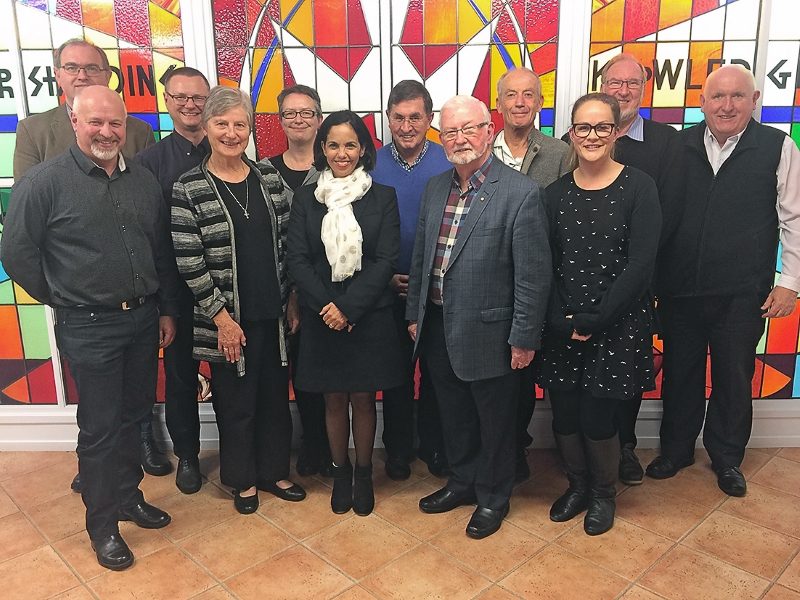Given the sexual abuse crisis in which the Church is embroiled, theologians need to rethink a faith-based response to sexual violence.
Systematic theology lecturer at Good Shepherd College Dr Rocio Figueroa said theologians “are conscious that theology cannot be the same following the severe crisis of sexual abuse that has happened in our Church”.
“We must rethink a lot of topics. We must rethink our Christology. We must rethink how we see power and many other issues, pastoral topics,” she said.
Dr Figueroa and Otago University Professor David Tombs (Centre for Theology and Public Issues) organised an April 28 symposium called “The Abused Christ: Theologians Respond to Sexual Abuse”. This was part of a wider project they are collaborating on called “When did I see you naked?”
Sixteen theologians from Otago University, Auckland University, St John’s Theological College, Trinity Methodist College and Good Shepherd College participated in the symposium held at Holy Cross Seminary in Ponsonby, Auckland.
Former priest and consultant to the Australian Royal Commission on Institutional Responses to Child Sexual Abuse Dr Des Cahill reported on the results of this inquiry.
He said of all the offending that took place in religious settings that was reported to the commission, 61.4 percent occurred in Catholic settings.
He said it was important to rethink the priesthood as a position not of power but of service.
Dr Cahill said in many cases, people had fully entrusted the priests with their children, mindful of the priests’ position in the hierarchy of the Church.
Msgr Brendan Daly, Good Shepherd College lecturer in canon law, suggested several changes and additions to canon law.
“Key canons: 1395 concerning crimes of sexual abuse; 1362 concerning prescription; 1311, 1389 and 1341 concerning the need to impose penalties for sexual abuse crimes; and 1041 and 1044 concerning irregularities; urgently need to be changed. New law is needed in the areas of secrecy and excommunication for sexual abuse of minors,” he said.
Msgr Daly also strongly suggested the inclusion of a paragraph calling for the immediate excommunication of a person who uses child pornography.
“There needs to be another paragraph concerning use of child pornography: A person who abuses a person under age 18 or who acquires or holds or distributes pornographic images of minors below the age of eighteen years is to be punished with automatic excommunication and the penalties mentioned in paragraph 2 in whatever way or by whatever instrument the shameful act has been committed,” he said.
Msgr Daly noted the Australian royal commission demonstrated that within the Catholic Church perpetrators of sexual abuse were 37 per cent non-ordained religious (32 per cent were religious brothers and 5 per cent were religious sisters); 30 per cent were priests; 29 per cent were lay people.
“Since a significant proportion of offenders are lay people, there needs to be a penalty addressing this,” he said.
Msgr Daly also said people with “imperfect use of reason” should be considered as minors.
Anglican priest Dr James Harding, a senior lecturer in Hebrew Bible/Old Testament Studies at the University of Otago talked about the importance of the theology of lament, specifically in Psalm 22.
He said Psalm 22 began with a cry from someone who is in intense pain, socially isolated and feeling shamed and abandoned.
Dr Figueroa said Dr Harding’s presentation was interesting in that it showed the importance of not being silenced and enabled people to talk about abuse.
Dr Figueroa and Dr Tombs also spoke about their “When did we see you naked?” project.
“Our aim is to examine the opportunities and challenges of better faith-based responses to sexual violence,” she said. “We will take this question and we will explore if the text of Jesus being stripped naked and exposed and crucified can improve the Church’s responses.”
She said the Church includes “all of us, not just the priests but also lay people and the community”.

Speaking from mid 2019, RICO racketeering charges have just been laid against New York dioceses. Perhaps the problem is not following the canons that already exist and engaging in criminal behavior bya rather secularized clergy (i.e. RICO was design for the Mafia).
I know it is fashionable, but what is the rationale for weaponizing this debacle to dismantle priestly celibacy? The article notes that approx 60% of offenders were Catholic. The other 40% were not so thus allowed to marry. As were all the other non-religious scoutmasters and State-care worker offenders.
Are there any other factors, any other causal relationships? Hmmm… Perhaps an ideologically independent Hercule Poirot should investigate and search for evidence of elephants in the room?